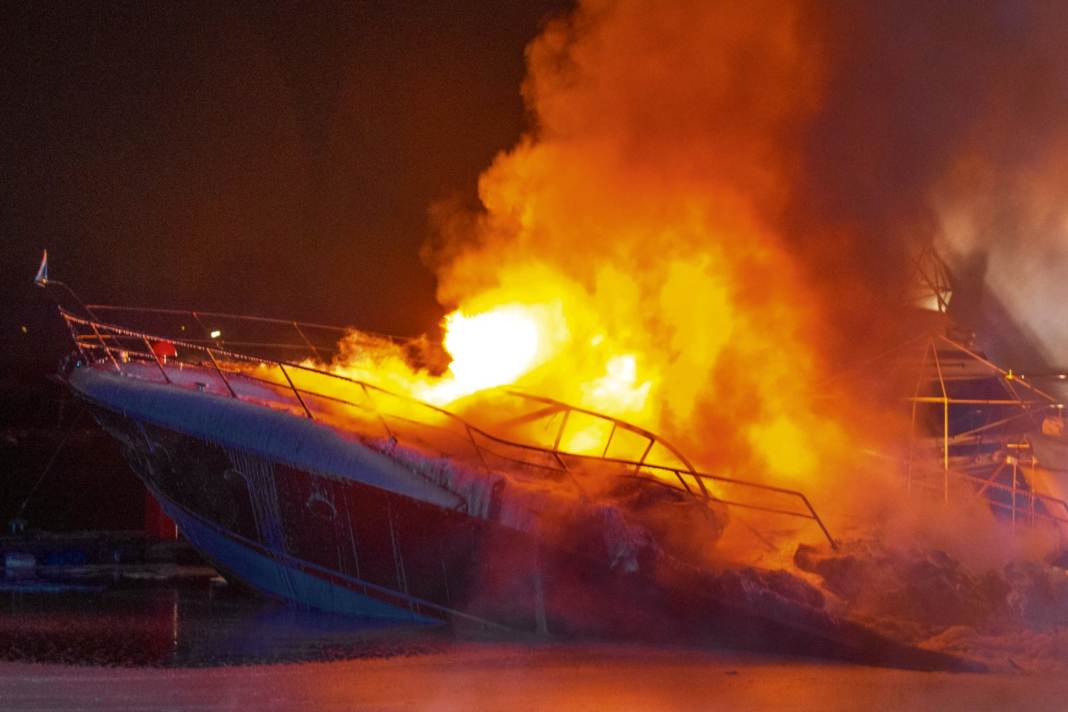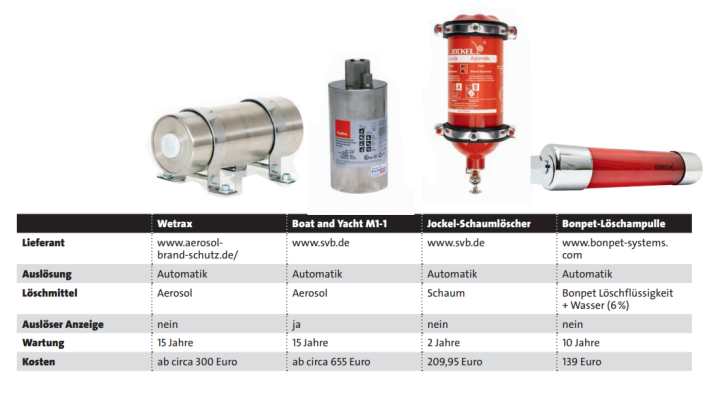





Fire is every boat owner's nightmare. At sea, but also in the harbour, a fire is often synonymous with the loss of the boat. If there is a fire at home, in the best case scenario the fire brigade will arrive quickly. This is somewhat more complicated or simply not possible at sea. If you don't have a fire extinguisher to hand or are unable to fight the fire for other reasons, you will inevitably have to leave the boat.
But why can a fire occur in the first place? One common reason is that boats have a lot of technology installed in a small space. The salt air can cause electrical contacts to corrode over time. As this increases the contact resistance, the contact points are subjected to greater stress and can become hot, which in turn can lead to a fire. This is known as an electrical fire. As cables are often hidden behind panelling, such a fire is often discovered too late and the entire boat is engulfed in flames. Other possible types of fire are gas fires, grease fires during cooking or engine fires.
What are the different ways of extinguishing a fire?
To minimise the danger in the engine compartment or other vulnerable areas such as the galley and to be able to extinguish the fire directly in an emergency, there are fire extinguishing systems that are installed in the engine compartment and often work in the same way: There is a trigger that sets off the fire extinguisher, often aerosol, and floods the engine compartment with the extinguishing agent. Aerosol extinguishing agent is also known as dry fog and is a heterogeneous gas with tiny liquid or solid colloidal suspended particles. It separates the chemical compound of the flame on a molecular level and thus removes important fire molecules. Aerosol extinguishers are suitable for all fire classes and can be easily and flexibly installed in the areas to be protected. Thanks to low-maintenance technology and a long service life of often over 15 years, they also score highly in terms of cost-effectiveness. There are various manufacturers of these systems, here we show four of them as examples.
Fire is a nightmare, but unfortunately not uncommon
The company Wetrax, distributed by flo trade GmbH, is leading the way. The company offers different fire extinguishing systems depending on the size of the engine compartment. The smallest is called the RSL 100 CR and is intended for compartments with a maximum net volume of one cubic metre. The RSL 400 CR is intended for somewhat larger engine compartments with a net volume of up to five cubic metres. The fire extinguisher works with a thermal detection cable, which melts in the event of a fire and thus triggers the extinguishing process: the aerosol is released and extinguishes the fire. According to the manufacturer, the extinguishing agent should not cause any damage.
As the system does not have to be stored under pressure, it is practically maintenance-free. A service life of over 15 years is specified. The smallest and cheapest version starts at 499 euros and is made of powder-coated steel. A carbon style and stainless steel version is available for an extra charge. The price refers to a complete extinguishing system including installation material, thermal detection cable and igniter.

The Boat and Yacht M1 fire extinguishing system, marketed by SVB, works on the same principle as the Wetrax system. It is also available in different sizes. The M1-1 variant is suitable for small engine compartments (up to 0.5 cubic metres net volume), followed by the M1-2 (up to one cubic metre), M1-3 (up to 1.5 cubic metres) and the M1-4 (up to 2.9 cubic metres). Here too, the system should be practically maintenance-free and can be installed in the engine compartment. A heat detection cable is also available. It should also be mentioned that a sounder is supplied as a fire alarm; this must be connected via twelve volts, but is useful in order to be informed when the system is triggered in an emergency. Prices start at around 655 euros for the M1-1 fire extinguishing system.
The size of the system depends on the engine compartment
Also available from SVB is the Jockel foam fire extinguisher with a capacity of two kilograms. The advantage over aerosol extinguishers is that foam can be applied more precisely to the source of the fire. Due to their low specific density, water film-forming foam agents are able to form a closed vapour-tight and watery film on the surface of the burning material. This also works with burning liquids. This barrier layer prevents the escape of vapours and gases and hinders the supply of oxygen to the burning material, thus smothering the fire. Foam also has a cooling effect due to its water content and can be easily removed later.
The foam extinguisher has an automatic extinguishing head and is also designed for permanent installation in the engine compartment. It consists of a powder-coated steel container. However, a foam extinguisher must be serviced every two years. The Jockel foam fire extinguisher costs 209.95 euros. The extinguishing system must be mounted vertically, which should be taken into account when purchasing and installing it.
The last system comes from the company Bonpet and is called the extinguishing ampoule. The ampoule is designed for an engine compartment measuring around eight cubic metres. It contains a liquid that extracts oxygen from the fire and cools it at the same time. This is intended to prevent the flames from flaring up again. The liquid inside consists of a mixture of Bonpet liquid and water (six per cent). At a temperature of 85 degrees, the glass of the ampoule breaks at a predetermined breaking point and a defined jet is released. After the fire, the environment should be easy to clean as the liquid can simply be wiped away with a damp cloth. The Slovenian manufacturer claims ten years of maintenance-free operation. The ampoule costs 139 euros and is available in various colours.
Conclusion
It is highly advisable to have a fire extinguishing system on board. Regardless of the engine compartment size or engine type. Whether it has to be a complete system with igniter and alarm is a matter of taste. The Bonpet extinguisher cartridge or a permanently installed automatic foam extinguisher are certainly a more cost-effective alternative to the otherwise rather expensive competitors.

